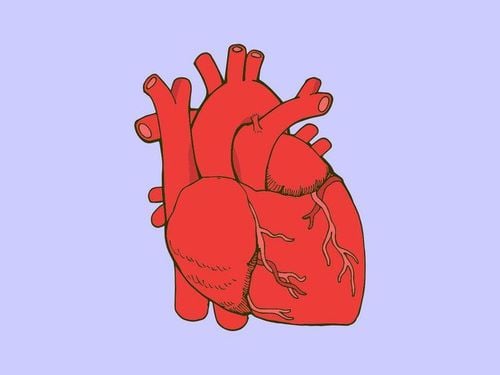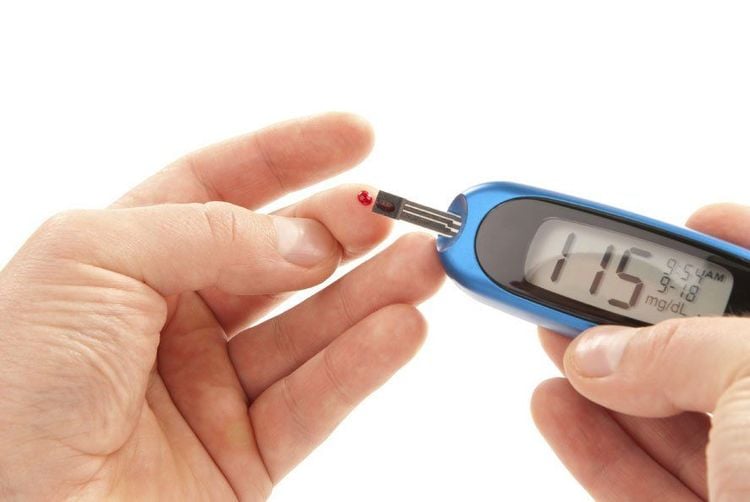This is an automatically translated article.
Hypoxia is a complex pathological process because our body is not supplied with enough oxygen for the normal functioning of the cells, or because of a disease in which the cells of the organization cannot use oxygen. Learning about the causes of hypoxia will help you better prevent this condition.1. Causes of lack of oxygen
1.1. Lack of oxygen due to respiratory causes We are deprived of oxygen due to respiration in case the air is thin, there is not enough oxygen for the body to breathe when climbing (by plane), climbing mountains or living in high mountains... Then you can get altitude sickness or alpine disease.Altitude sickness Is an acute lack of oxygen when climbing suddenly above 3000m or flying above the limit without or failing to have an oxygen tank. The altitude of 4000 - 5000 m is considered the limit of the flight without additional oxygen.
Pathological signs appear depending on the height and endurance of the body. The earliest signs are:
Nervous disorders such as erratic fatigue, headaches, memory loss, slow reflexes, nausea,... These are the causes of lack of oxygen to the brain and are very dangerous. especially for those who often work at height. Due to the inability to compensate for the increased CO2 excretion, vomiting is hypoxic with hypocalcemia and alkalosis. The heart beats fast, weak, possibly arrhythmia. If not handled in time, the nervous system is deeply inhibited leading to convulsions, coma and death. The five-sensory disorders such as vision and hearing disorders... The main treatment is to provide treatment. Pure oxygen:
Go above 8000m- pO2kk = 0.21.(270- 47): 47mmHg Pure oxygen supply: 1.(270-47):223 mmHg. But if you climb above 10000m, even pure oxygen is not enough, you must have a pressure chamber. Go up to 15000m, breathe oxygen: pO2kk = 1. (95- 47): 48 mmHg in this case, people have to live in the chamber. new pressure avoids hypoxia and weightlessness Alpine disease An acute hypoxia phenomenon when climbing mountains above 600m (explorers). The danger of hypoxia also depends on altitude and some additional factors such as physical fatigue, cold, effects of ultraviolet rays, cosmic rays...
When climbing above 300m, signs of deficiency oxygen begins to appear: Nervous excitement, a state of excitement, pleasure, laughter... Up above 4000m more obvious signs, headache, nausea, erratic fatigue, poor memory, dyspnea, cyanosis, respiratory cycles... The altitude of 6000m is the ultimate limit that humans can endure without additional oxygen. 1.2. Lack of oxygen due to cardiovascular and blood causes

Thiếu oxy do nguyên nhân tim mạch và máu
The H-cleavage reaction is carried out by cleavage enzymes H (dehydrase or dehydrogennase), this enzyme is easily damaged at temperatures above 55oC and is inhibited by babiturates, in the composition of vitamins H-transitional reaction is followed by coenzymes I and II (DPN). = diphosphoric nucleotide and TPN triphosphoric nucleotide) and components with vitamin PP, and then transitioned by flavopretoin, components with vitamin B1 are susceptible to being inhibited by Fluoride and cyanide. Electron transfer reaction thanks to oydafa enzymes, cytocram system and cytochrome oydase. These enzymes are easily inhibited by cyanide, As, and H2S. Thus, even if only one step in this chain of reactions is disturbed, the process of cellular respiration cannot be carried out, therefore, although oxygen is supplied. adequate, the organization also cannot use oxygen leading to lack of oxygen.
Causes of cellular respiration can be:
Lack of substrates (anorexia, diabetes, depression...) causing vitamin deficiency and cellular respiratory enzyme deficiency Intoxication with substances that inhibit cellular respiration cells such as sleeping pills, CO, H2S, As, Fluoride, cyanide, toxins created during infection, toxic tumors...

Thiếu cơ chất (thiếu ăn, đái tháo đường, suy nhược...) gây thiếu sinh tố và thiếu men hô hấp tế bào
Please dial HOTLINE for more information or register for an appointment HERE. Download MyVinmec app to make appointments faster and to manage your bookings easily.













